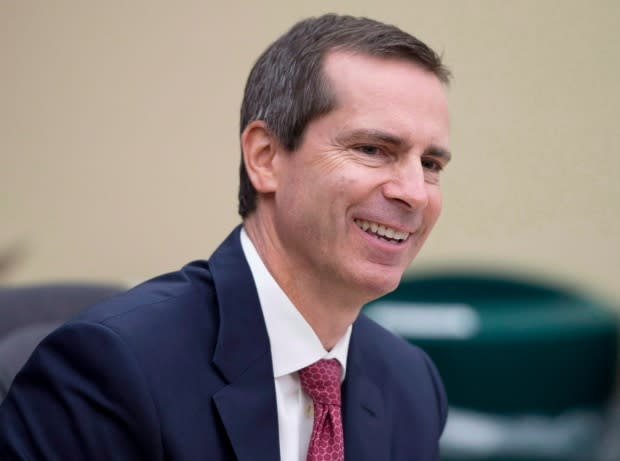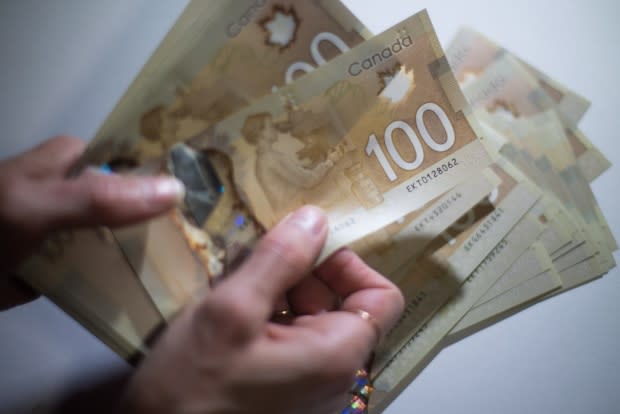5 things to know about Jason Kenney's fight over equalization
The federal government's financial arrangement of equalization payments is "perverse and nonsensical."
No, those aren't the musings of Alberta Premier Jason Kenney, who has been making headlines recently by threatening to hold a referendum over the issue.
That was former Ontario premier Dalton McGuinty back in 2005, making similar complaints that his province was getting a raw deal from the federal scheme.
"You can basically find premiers in every province of every party, at some point or another, voicing concerns around equalization," said Trevor Tombe, an associate professor of economics at the University of Calgary.
"Sometimes they are based on specific policy changes that were made; other times, like in Alberta, it is due to concern over other issues."

Those other issues, from Kenney's perspective, are largely tied to pipelines and the province's rich oil sector.
The Alberta premier finds it particularly irksome that Quebec opposes pipeline development, but, through equalization, ends up benefiting from the profits generated by Alberta's oil.
But Tombe argues that drawing such a direct line between two provinces when it comes to equalization is flawed.
"Equalization isn't tied to any particular revenue source. It's certainly not tied to any particular pipeline," Tombe said. "I think the connection is made really just because Quebec is a large recipient of equalization dollars and it's one of the more prominent provinces opposing pipelines through that province in particular."
Kenney has also said his government is "prepared to put on the table equalization, by holding a constitutional referendum to end equalization, to assert our fight for fairness to the top of the national agenda."
How equalization works
Equalization is a federal program that provides unconditional transfer payments to lower income provinces to help address fiscal disparity across the country and allow for comparable public services from coast to coast.
(The territories are given federal funding through a separate program, known as the Territorial Formula Financing program.)
As Tombe once wrote in a CBC Opinion piece, "provinces with stronger economies get less (or none) while provinces with weak economies get more."
Equalization entitlements are determined by measuring provinces' ability to raise revenues, known as "fiscal capacity."
"If you're below average, you get equalization; if not, you don't," Tombe wrote.
Currently, Prince Edward Island, Nova Scotia, New Brunswick, Quebec and Manitoba receive equalization payments.
Clarifying who pays
Premiers often talk about their respective provinces and taxpayers paying for equalization.

But the money for the equalization payments comes from federal general revenue, like income and corporate taxes, the GST, and tariffs on imports that all Canadians pay into.
This means, for example, the province of Alberta doesn't write the province of Quebec or the Government of Canada a cheque to pay for its share of equalization. But it also means that Canadians with higher incomes will pay more into the equalization program, much like Canadians with higher incomes pay higher rates of income tax.
Because a lot of high-income individuals live in Alberta, they do pay a larger share of the federal budget — and an equal amount of federal spending does not end up back in Alberta.
This year, the federal government will transfer more than $78 billion to the provinces, $19 billion of which is delivered under equalization.
Opt out?
Since equalization payments are collected from federal general revenue, Alberta can't just withdraw from the program because there is no "equalization fund."
"The design of the equalization program itself is 100 per cent federal. The provinces have no role in terms of the design and implementation of that program," Tombe said.
Equalization is entrenched in the Canadian Constitution, which states that "Parliament and the Government of Canada are committed to the principle of making equalization payments."
Putting an end to equalization payments would require a constitutional amendment — something unlikely, since two-thirds of the provinces would need to support such a change.
Equalization discouraging resource development?
Part of Kenney's complaint is that "other provinces benefit from equalization payments generated, in part, from our energy resources, while refusing to develop their own energy resources."
Todd MacKay, the prairie director of the Canadian Taxpayers Federation, says he believes provinces that receive equalization are disincentivized to develop their own resources. When his home province of Saskatchewan was a so-called "have not" province, he said he believes many decisions were coloured by how it might affect their payments.
"It was worse for us when we got money than it is now when we lose money," he said.

This issue is something the equalization formula grappled with since its very beginning, Tombe said.
The reason the federal government includes only 50 cents of each dollar of resource revenue in the calculation is, in part, a compromise between two competing considerations, he said. Including 100 per cent of resource revenues would mean that if a recipient province earned a dollar in additional resource revenue, they would see their equalization fall by a dollar.
"And that would completely eliminate the incentive," Tombe said. "For incentive reasons, you want to include zero, but for comparability reasons, you want to include 100 per cent. [The compromise was] they went with 50."
Problems and possible fixes
It has certainly been noted that the Alberta premier is complaining about an equalization formula that was last adjusted in 2009 by Stephen Harper's Conservative government, of which Kenney was a cabinet minister.
"If Kenney hates the current formula so much, why didn't he do something about it when had the chance," asked an article published in Policy Options last year.
The piece also noted problems with equalization, including that the fiscal capacity of non-receiving provinces has shrunk, while the fiscal capacity of the recipient provinces has increased.
"As a result, the disparity between receiving provinces' fiscal capacity and the national average has narrowed."
Also, it argues that just using fiscal capacity of a province as the measurement "provides an incomplete picture of the ability of a province to provide public services," due to differences in demographics and costs of providing services.
Tombe says there's no prospect for large-scale changes to equalization — but there could be room for tweaks.
For example, Kenney had proposed removing resource revenues from the calculation, which would have the effect of increasing payments to Quebec and decreasing payments to the Maritimes.
Shifting the sources of federal revenue to sources that are less sensitive to income is one way to shrink the gap instead, said Tombe.
"If someone wants to make the case that we should increase the GST and decrease the income taxes in order to even out federal revenue and spending across the country, that would be an entirely logical and fair position to take," he said.
"But then I look back to 2006, and what was the signature tax policy change of the newly elected government, of which Kenney was a part? It was to decrease the GST instead of decreasing income taxes."


